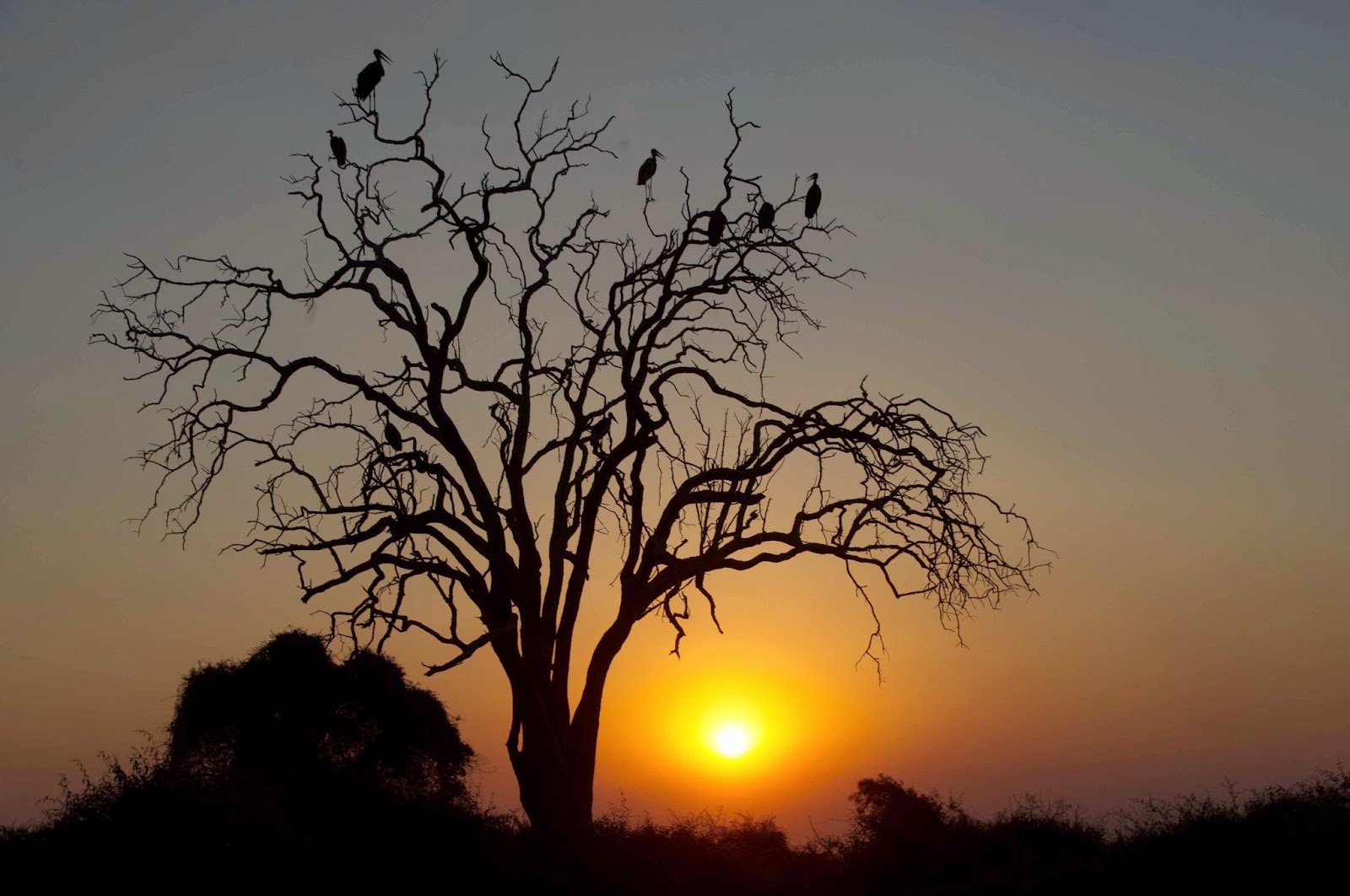 |
| Zebra, Waterbuck, and Impala grazing together |
 |
| View from our deck |
 |
| Baobab Tree |
I haven’t been as regular as I’d hoped in keeping up with this blog. We are in
Johannesburg now and headed off to our next stop at SpionKop where we will
spend the next five days. We had a fabulous time at Muchenje with Robert and
Joy as our hosts and David as our guide. Robert and Joy had great stories to
tell about knowing Jane Goodall and Dion Fossey. They are also good friends
with Peter Allison who wrote the marvelous book, Walk Don’t Run, about his adventures as a game guide. Since we have
all read his books, it was a real treat to learn more about him.
 |
| We ate lunch with the Elephants our first day |
 |
| Then waited for them to cross the road on our way back to camp |
Of course, the real treat at Chobe is the animals. The park
is about 11,000 square km. It was set aside in the 1930s and became Botswana’s
first national park in 1968. Botswana has the largest number of elephants of
any nation; over 70,000 of them live in Chobe along with lions, leopards and
thousands of different species of antelope. It may be hard to believe, but by
our fourth day we would drive through a herd of 100 elephants without stopping
as we were in search of other animals or birds.
 |
| She is wishing that those zebra hadn't seen them |
 |
| Just resting in the middle of the day |
 |
| We saw 29 lions. This was the only male. |
The camp sits at the top of a slope overlooking the Chobe
River so we awoke each morning to a view of the expanse of Africa and its
animals. Since the river is the border Botswana and Namibia, we were also able
to watch Namibian fishermen working their nets. Zebra, waterbuck and vast
numbers of birds usually had made it across the river to graze enhancing the
view.
 |
| Tough times for the baboons as they wait for the rain. |
 |
| The short neck leads to adaptive behavior. They are not praying. |
 |
| We saw one elusive leopard - a first for Rintas and Briggs. |
 |
| The Chobe bushbuck is the only one with spots. This was a very rare sighting. |
 |
| Slender Mongoose |
 |
| Banded Mongoose |
 |
| An unusual scene of a buffalo in the water feeding. |
 |
| Spotted hyena at dusk |
 |
| A beautiful Waterbuck |
 |
| Kudu |
Rather than write more, I am just going to show some of the
better pictures. Enjoy.
 |
| African Fish Eagle |
 |
| Tawny Eagle |
 |
| African Jacana - also known as the Jesus bird as it seems to walk on water over the lily pads |
 |
| Brown-headed Tchagra |
 |
| Crimson-breasted Bee-eater |
 |
| Blue Waxbill |
 |
| Kori Bustard - Botswana's National Bird |
 |
| Lilac-breasted roller - runner up for the title of national bird |
 |
| Marabou stork - one of the "Ugly Five" |
 |
| Yellow-billed Stork |
Sunsets here are absolutely amazing.



















































